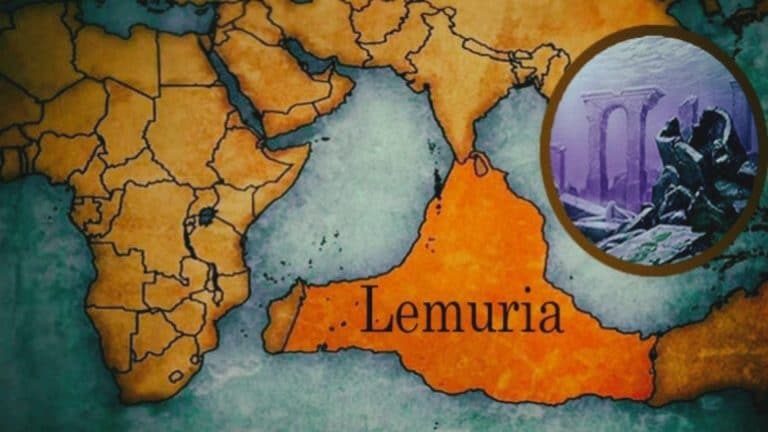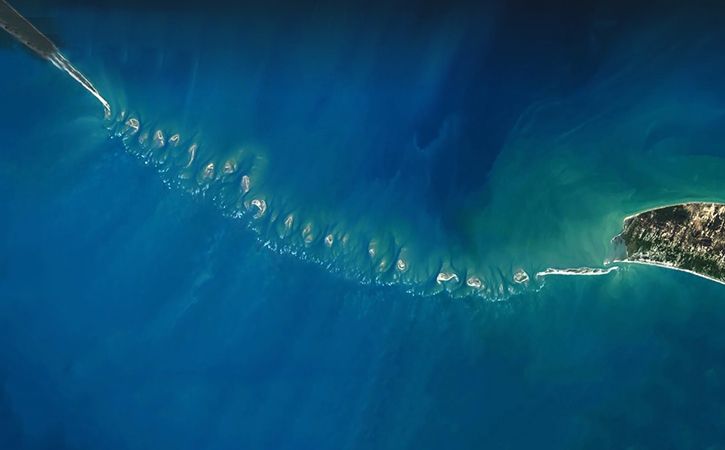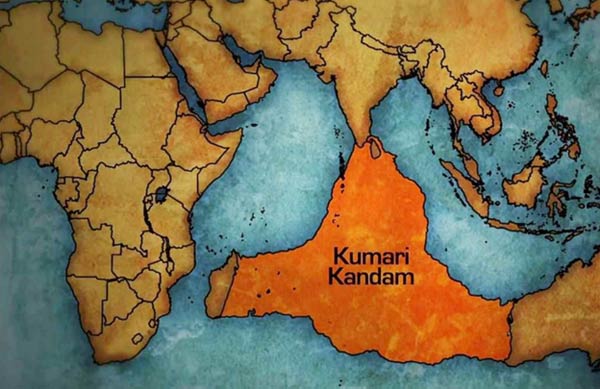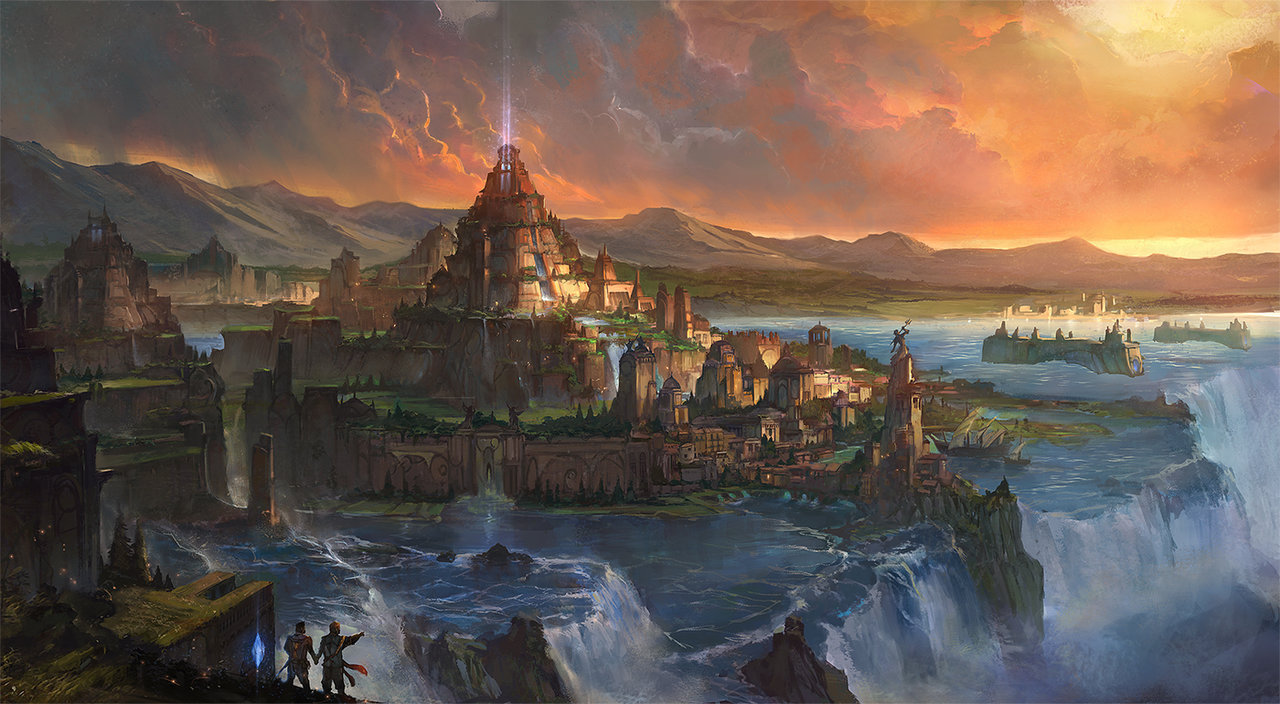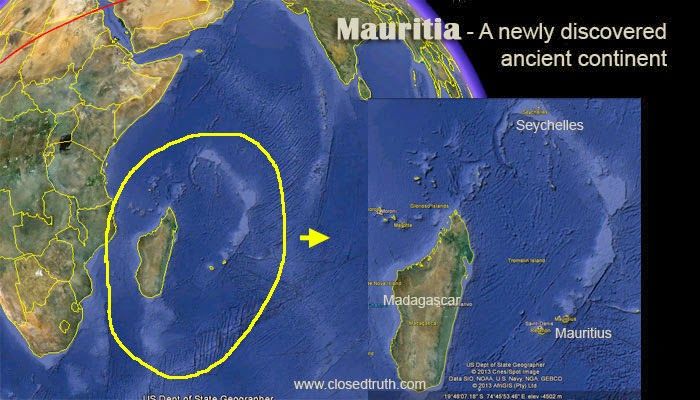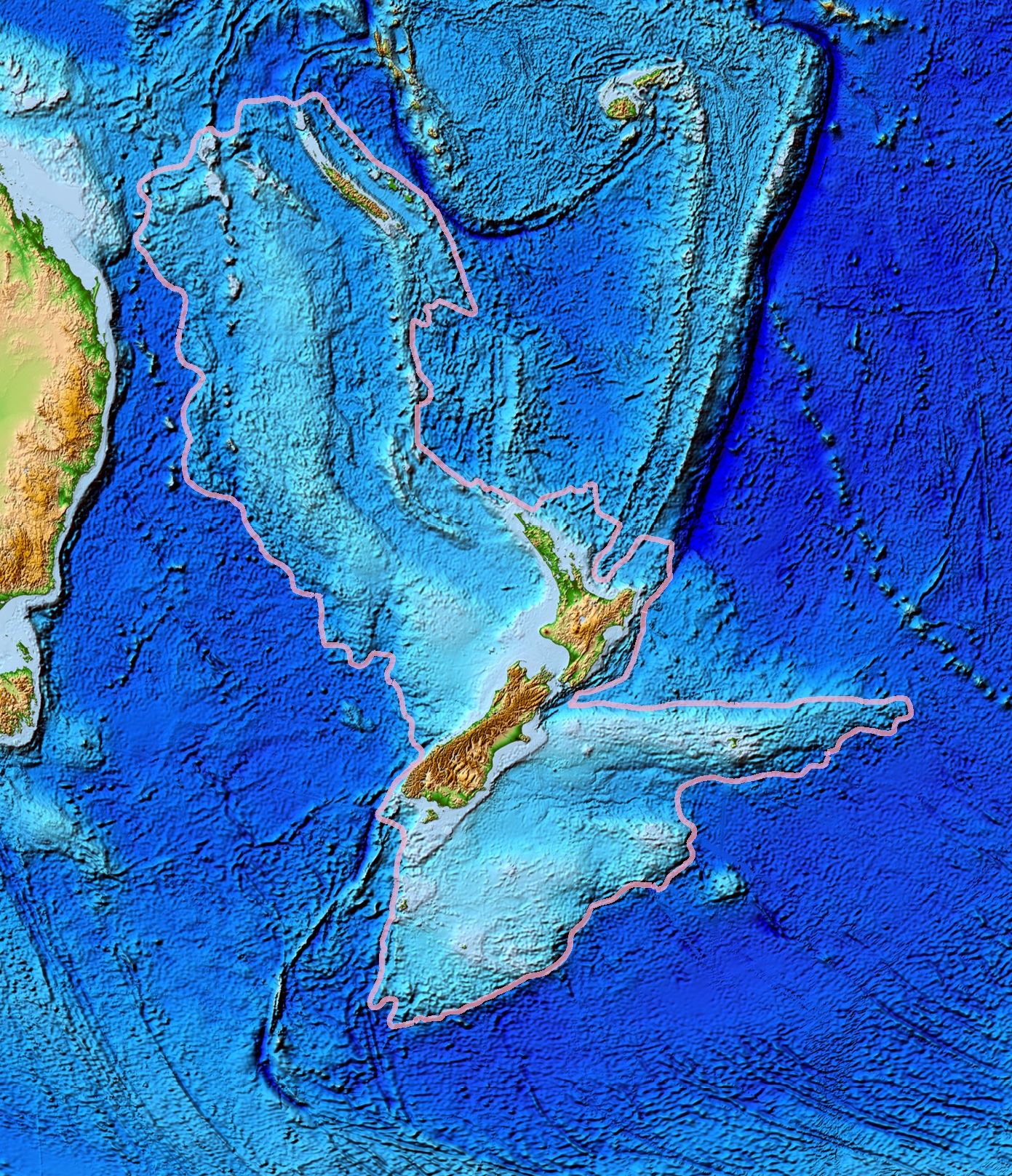
The lost continent we’re focusing on in this article, however, is the mythical continent of Lemuria, which was believed to be located in the Indian Ocean.
Scientists supporting the existence of Lemuria
The first time scientists started to talk about this land, was during the mid-1800s when a British lawyer and zoologist – Philip Sclater wrote a paper entitled “The Mammals of Madagascar”. Sclater found that lemur fossils were extremely abundant in Madagascar and India, but curiously, these fossils were entirely missing in the Middle East and Africa. This conclusion led Sclater to suggest that during one point in the remote past, India and Madagascar were connected by land, and were part of a larger continent he decided to name Lemuria. Many other scientists proposed the existence of such a continent as well.
Etienne Geoffroy Saint-Hilaire, who is a French naturalist, also speculated about an ancient land connection between Madagascar and India in 1840.
The British naturalist Alfred Wallace, proposed in 1859 that only a sunken continent could explain the fauna found on the island of Celebes.
In 1869 the German zoologist, naturalist, and marine biologist Ernst Haeckel, who discovered and named thousands of new species, charted a genealogical tree associating all life forms, and issued many terms in biology, published his book “The History of Creation”. In it, he promoted his view on the theory of evolution, and considered that the earliest humans might have descended from Asian primates, and placed the cradle of humanity in Asia, Africa, and very interestingly, on a lost continent in the Indian ocean. His theory was also accepted by the scientific community, as this could explain the possible migration route of early humans from Africa to Indonesia. Ernst Haeckel even made the first hypothetical map of Lemuria, which he simply called “Paradise”. 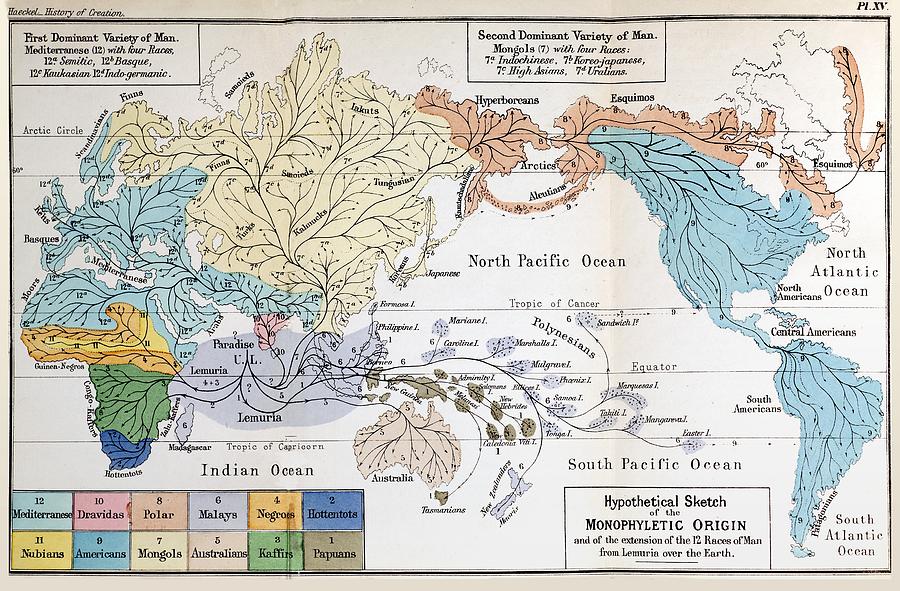
“The probable primeval home or “Paradise” is here assumed to be Lemuria, a tropical continent at present lying below the level of the Indian Ocean, the former existence of which in the tertiary period seems very probable from numerous facts in animal and vegetable geography. But it is also very possible that the hypothetical “cradle of the human race” lay further to the east (in Hindostan or Further India), or further to the west (in eastern Africa).“
Lemuria – home of the first civilization
The idea of Lemuria, as a lost cradle of humankind, wasn’t discussed just by scientists, but also by esoteric societies.

In 1888 Helena Blavatsky published her book “The secret doctrine“, in which she gives fascinating information about Lemuria. She proposes that Lemuria was the cradle of one of the seven races of humanity. She writes that millions of years ago, an ancient humanoid race coexisted with the dinosaurs. These beings seemingly possessed four arms and eyes and were egg-laying hermaphrodites. Curiously, this description is very similar to some of the ancient Hindu deities, which were often depicted with four arms. Although Westerners don’t believe in the ancient Sanskrit texts and regard them as mere bedtime stories, there is plenty of evidence which proves that some of the legends there, as crazy as they sound, are actually real.
Rama Setu – The Bridge of Rama
An example of this is one story about Lord Rama and his Vanara humanoid monkey army, which according to the epic – Ramayana, built a massive bridge between mainland India and Sri Lanka to rescue Lord Rama’s wife, who was imprisoned there. Of course, no one except the Hindus even took this story seriously until many years later, satellite images taken by NASA revealed that what we see could, in fact, be a collapsed ancient bridge, now partially submerged under the ocean.
The texts from the Ramayana even described the building process in great detail. The process contained a survey, planning, execution, and post-completion, all of which are fundamental parts of the process of every architecture even today. There was even a chief engineer of the project called Nala, which is why the bridge is also known as Nala Setu, or the bridge of Nala. The texts give details of all the materials used for the construction, and all the types of trees which were first piled on the sea ridge to provide a pile foundation or wood cushion effect. On top of them, large and small stones were piled, and on top of the stones, a flat finished level was arranged. The Vanara monkey people, even held ropes on both sides of the bridge to build it in proper linear alignment, a technique used even today.
The entire story was confirmed to be a truly historical event, when Dr. Badrinarayanan, the former director of the Geological Survey of India, examined the structure and his team drilled ten boreholes along the alignment of the bridge. What he found was startling. About 6 meters beneath the surface, he discovered a consistent layer of calcareous sandstone, corals, and boulder like materials. It was obvious that the ancient bridge was man-made. Further investigations confirmed that the bridge was created around 7000 years ago, the same period the Ramayana was written.
According to the Ramayana, the ratio of the bridge was 10:1 (length:width). Measured today, the bridge is about 35 kilometers (21 miles) long and 3.5 kilometers (2.1 miles) wide, the exact ratio of 10:1 as described in the epic. Scientists examining the bridge, concluded that the stones used for the construction, are older than the sand itself, confirming someone placed them there, using advanced forms of engineering. Chelsea Rose – a historical archaeologist and adjunct faculty member at Southern Oregon University, also examined the site and confirmed that:
“The rocks on top of the sand actually predates the sand, so there is more to this story,”
Other scientists, while also agreeing that the bridge is man-made, believe it was built 1.7 million years ago, a time when modern humans didn’t even exist. This is the time of the Homo erectus, who predates the Neanderthals. Could the humanoid monkey army of Rama be the early ancestors of man, precisely the Homo Erectus? The Homo erectus could very well fit that description, and although they don’t have the intellectual capacity required to build anything, they had the physical strength to do it. And if there were ancient higher beings like Rama, could these beings guide the Homo erectus and use them for this construction?
According to the legend, after the bridge was constructed, Lord Rama led his army through it, and successfully defeated the captor of his wife and liberated her. On his way home, Rama flew with his Vimana – which according to the Sanskrit texts, is some kind of flying vehicle used by many of these blue-skinned beings and deities. A device that we today would call a UFO.
If this mega-structure from the Ramayana is real, could the stories of the flying ships called Vimanas, and ancient races of giants mentioned there also be real?
Kumari Kandam – The Lost Continent of the Tamil
The ancient Tamil culture of South India is believed to predate both the Sumerian and Egyptian civilizations, and some even call it the first civilized human race. The Sangam literature, which is the earliest known literature of South India, tells the incredible story of an advanced Tamil civilization, flourishing in the now submerged continent of Kumari Kandam, thousands of years ago. Tamil people believe to this day of the existence of this mythical lost continent, and that it was their place of origin.
This now-sunken continent was situated in the Indian Ocean and was the connecting line between Africa and South India, via Madagascar. The continent was submerged when the sea levels rose, and the last ice age ended, forcing the Tamil people to migrate and mix with different groups, invariably forming new languages, races, and civilizations. A lot of people believe that not just the Tamil, but the whole of humanity is descended from the dwellers of Kumari Kandam. They believe the Tamil culture is the foundation of many enlightened cultures, and Tamil happens to be the mother language midst of a variety of other languages in the world.
According to researchers, the Lemurian continent of Kumari Kandam was separated from the mainland during the Mesozoic era because of the rising waters. Interestingly, according to India’s National Institute of Oceanography, the sea levels were around 100 meters lower around 15,000 years ago. The rapid rise of the sea level caused a massive flood, which led to the destruction of not only entire continents but entire civilizations that existed on Earth in the distant past. Professor Shanmughatas, a researcher in this area, said the following:
“One can imagine the strength and magnitude of the tidal wave required to devour a mountainous area that existed in the ancient coastal belt of the Tamil world.”
Could this flood be the Biblical flood, which is mentioned by every culture on the globe?
Evidence of an Ancient Continent in the Indian Ocean
More evidence suggesting the presence of an ancient continent in the Indian Ocean was discovered in the tropical island of Mauritius. In 2013, scientists discovered pieces of granite in the ocean south of India adjacent a shelf that stretches hundreds of miles south of the country towards Mauritius. And on Mauritius, a team of geologists found zircon, which dated to 3 billion years ago, which is eons before the formation of the island itself, which only came into being 2 million years ago. This means that the zircon they discovered, came from a much older landmass, that sunk into the Indian Ocean. Instead of calling this lost continent Lemuria, the geologists named it Mauritia. Despite the different name, everything lines up perfectly with Sclater’s theory of the lost continent of Lemuria, and the Tamil legend of Kumar Kandam.
Conclusion
With all these discoveries and ancient legends, we can agree that despite our technology, and notion of history, we still know very little about Earth’s past and our real history. Our planet is surrounded by mysteries, lost ancient civilizations, and advanced highly intelligent beings, which constructing fascinating marvels of architecture we still admire today. Every mystery we unravel opens more and more questions, which simply can’t be answered with the knowledge we have from our history books.
As Napoleon Bonaparte said:
“History is the version of past events that people have decided to agree upon.”

